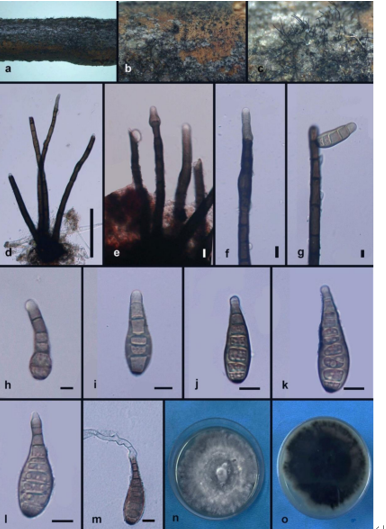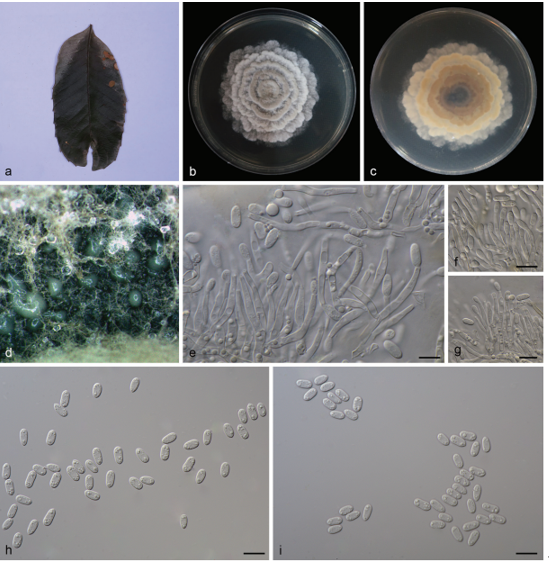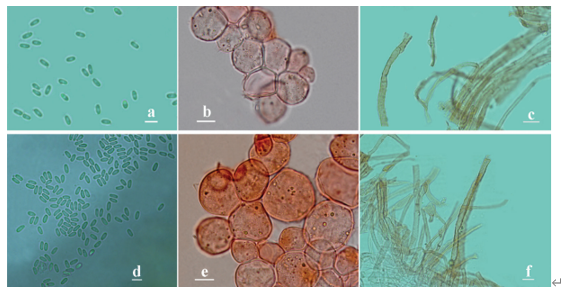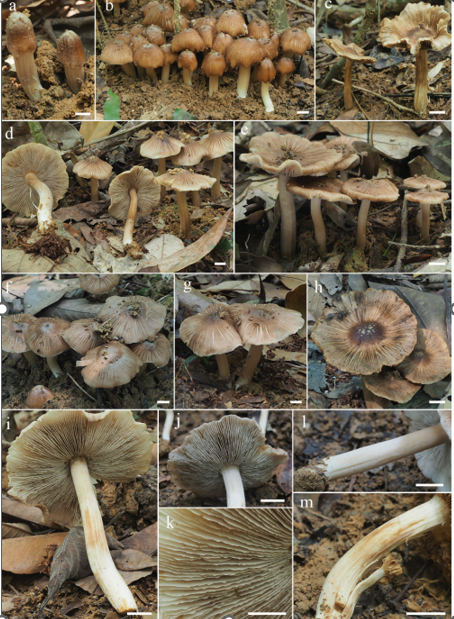Meruliopsis nanlingensis (B.K. Cui & B.S. Jia) C.C. Chen & Sheng H. Wu 2020
MycoBank MB830644
Holotype: CHINA. HUNAN PROVINCE: Yizhang County, Mangshan Nature Reserve, on angiosperm twig, 26 Jun 2007, Dai 8173 (holotype in BJFC). JAPAN. HONSHU: Yamanashi, Minami-tsuru-gun, Fuji-kawaguchiko-machi, Goten-niwa, 35°29′N, 138°38′ E, 965 m, on angiosperm branch, 4 July 2008, S.H. Wu, Wu 0807-5 (TNM F22057). TAIWAN. Taichung City, Hoping District, Anmashan Hiking Trail, 24°16′N, 121° 00′E, 2250 m, on angiosperm branch, 10 May 1999, S.H. Wu, S.W. Chou & Y.H. Chen, Wu 9905-21 (TNM F10523); 19 km of Dasyueshan Forestry Road, 6 May 2018, C.C. Chen & C.M. Hu, GC 1805-14 (TNM F31800); 43 km of Dasyueshan Forestry Road, Anma Villa, 24°15′22″N, 120°59′59″E, 2250 m, on rotten wood, 22 May 2008, S.H. Wu, S.Z. Chen & Y.T. Wang, Wu 0805-107 (TNM F22546); Wu 0805-110 (TNMF22546); Henglingshan Trail, 24°14′03″N, 120°56′08″E, 1770 m, on angiosperm branch, 7 May 2017, C.C. Chen, GC 1705-7 (TNM F32061); ibid., GC 1705-11 (TNM F32062); C.L. Wei, WEI 17-090 (TNM F32063); 24°14′ 12″N, 120°55′08″E, 1400 m, 7 May 2017, C.C. Chen, GC 1705-13 (TNM F32064).
Morphological description
Basidiocarps up to 0.5 mm thick and 3 cm wide, annual, resupinate, effuse, adnate, membranaceous; margin up to 1 mm wide, white to cream, very thin, usually indistinct. Pore surface rose pink to grayish rose when fresh, rosy buff to buff when dry; pores 2–4 per mm, round to irregular; tubes up to 0.4 mm deep, concolorous with pore surface; dissepiments up to 125 μm thick, entire, with continuous hymenium; subiculum thin. Hyphal system monomitic; hyphae simple-septate. Subicular hyphae 3–8 μm diam, moderately ramified, loosely interwoven, colorless, slightly thick- to thickwalled, anastomoses frequent. Tramal hyphae 2–5 μm diam, moderately ramified, moderately interwoven, colorless, thin- to thick-walled, sometimes irregularly swollen, anastomoses occasional. Leptocystidia 30–42 × 4–6 μm, numerous, projecting, clavate to subulate, slightly flexuous, with acute or blunt apex, colorless, often sparsely encrusted, occasionally with one adventitious septum. Basidia 15–21 × 4.5–5 μm, cylindrical to clavate, 4-sterigmate. Basidiospores mostly 3.5–4 × 1.5–2 μm [(3–)3.5–4 (–4.5) ×1.5–2 μm, L = 3.92 μm, W= 1.78 μm,Q = 2.1–2.11 (n = 40) (Wu 0805-110)], narrowly ellipsoid to cylindrical, slightly curved, colorless, thin-walled, smooth, inamyloid, nondextrinoid, cyanophilous.
Habitat: On angiosperm twig.
Distribution: In China.
GenBank Accession:
Notes: Meruliopsis nanlingensis is characterized by the rose pink to grayish rose pore surface when fresh, presence of cystidia, and narrowly ellipsoid to cylindrical basidiospores. Morphological features of Japanese and Taiwanese specimens generally agree with the original description by Jia and Cui (2011a). However, our specimens have slightly larger pores (3–5 per mm; Jia and Cui 2011a) and sparse crystals on the cystidia (FIG. 7D). Also, the hymenium is continuous over the dissepiments, which was not mentioned in the protologue. Phylogenetically, one of our collections (Wu 0805-110) is clustered with the type strain (Dai 8173) of M. nanlingensis in a highly supported lineage (FIG. 2). This species is new to Japan and Taiwan.
Reference: Che-Chih Chen a, Chi-Yu Chen a, Young Woon Lim b et al.

Basidiocarps of Meruliopsis species in general and detailed views. A. M. leptocystidiata (Wu 1708-43, holotype). B. M. nanlingensis (Wu 0805-110). C. M. parvispora (Wu 1209-58, holotype). D. M. pseudocystidiata (Dai 1704, holotype). E. M. variegata (Li 1780, holotype). Bars = 1 mm.









